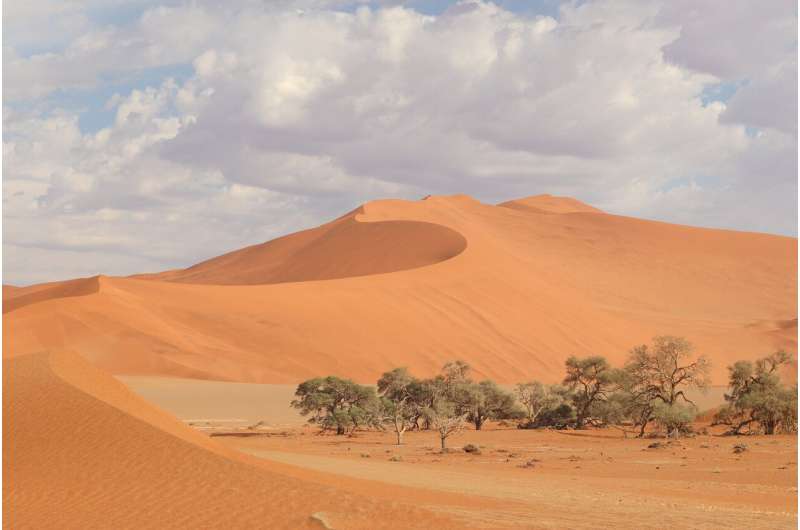
Early in May, King Philippe of Belgium was on the edge of the Namib desert to inaugurate a project that aims to help decarbonize European industry, and which might just enable one of Africa's smallest economies to hit the clean-energy big time.
It was a humble start for such grand designs, as Namibian President Nangolo Mbumba hosted the king at an unfinished site near the port of Walvis Bay on the southern Atlantic Ocean, the baking rust-colored dunescape silent except for an occasional truck passing on the new roadway.
But Philippe was just the latest in a string of European dignitaries to buy into Namibia's grandiose plans to become a hub for what's known as green hydrogen. It's a technology whose critics say is a commercial illusion, but whose political and corporate backers believe may be the answer to cleaner shipping and heavy industry.
"We are really very committed in this hydrogen and green hydrogen journey," Belgian Energy Minister Tinne Van der Straeten said in an interview at the site of the project, known as Cleanergy Solutions.
From modest beginnings, Namibia is banking on a whole new supply chain taking shape—from the production of hydrogen that's turned into ammonia for transportation, to associated "green" products—that would place it at the forefront of a developing clean technology, and finally put it on the map.
Europe, for its part, sees a means of furthering its green transition and bolstering energy security after it lost natural gas from Russia. The European Investment Bank has pledged a €500 million ($544 million) loan toward developing green hydrogen in Namibia, with the Netherlands' Invest International contributing to a planned $1 billion Namibian hydrogen fund.
Cleanergy, a venture between Antwerp-based shipping company Compagnie Maritime Belge SA (CMB) and local firm Ohlthaver & List Group, will be Namibia's first commercial green hydrogen plant. Built at a cost of $30 million partly funded by a $10 million loan from the German government, it's just the start: CMB intends to raise $3.5 billion to build an ammonia plant that would connect to a new storage and export facility planned by the Port of Antwerp-Bruges.
"Our customers are asking us to clean up our act to make sure that we don't emit CO2 anymore, so we need to find an alternative for diesel," said Alexander Saverys, CMB's chief executive officer, explaining the nearly 130-year-old company's decision to get into green hydrogen.
Five years ago, CMB reached out to producers about green hydrogen and ammonia. "They all laughed and they all said 'no, it doesn't exist,'" Saverys recalled. So CMB developed its own production and is now scaling up: CMB, which runs 200 ships worldwide, has ordered 45 ammonia-fueled vessels from China. That requires investing "in a country where there's an abundance of cheap renewable energy, and Namibia is that country," he said.
It's a prospect that could transform the nation of 2.8 million with a gross domestic product of some $13 billion, or around one third that of Vermont, the smallest economy of any US state.
If at all, Namibia is known for its desolation—home to one of the world's most arid deserts, the Namib, it's among the least densely populated countries on Earth. It's that ready availability of land, allied to lots of sun and wind, that offers such possibilities even in the face of competition from the likes of Chile, Saudi Arabia and Namibia's neighbor, South Africa.
2024 Bloomberg News. Distributed by Tribune Content Agency, LLC.
Citation: The audacious plan to seed a global green hub in Namibia's desert (2024, June 11) retrieved 11 June 2024 from https://techxplore.com/news/2024-06-audacious-seed-global-green-hub.html
This document is subject to copyright. Apart from any fair dealing for the purpose of private study or research, no part may be reproduced without the written permission. The content is provided for information purposes only.
